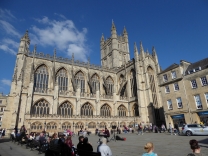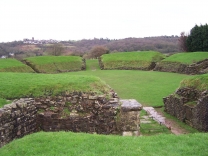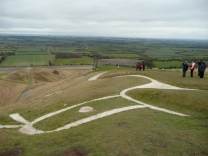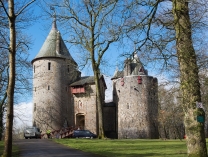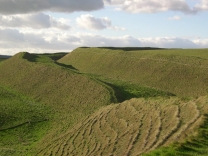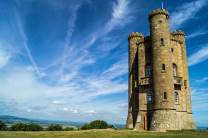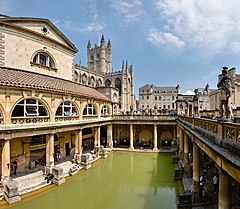
Roman Baths (Bath)
Roman site in the city of Bath, England
The Roman Baths are a well-preserved thermae in the city of Bath, Somerset, England. A temple was constructed on the site between 60-70CE in the first few decades of Roman Britain. Its presence led to the development of the small Roman urban settlement known as Aquae Sulis around the site. The Roman baths, which were used for public bathing, were used until the end of Roman rule in Britain in the 5th Century CE. According to the Anglo-Saxon Chronicle, the original Roman baths were in ruins a century later. The area around the natural springs was redeveloped several times during the Early and Late Middle Ages.
The Roman Baths are preserved in four main features: the Sacred Spring, the Roman Temple, the Roman Bath House, and a museum which holds artefacta from Aquae Sulis. However, all buildings at street level date from the 19th century. It is a major tourist attraction in the UK, and together with the Grand Pump Room, receives more than 1.3 million visitors annually. Visitors can tour the baths and museum but cannot enter the water.
Hot spring
The water which bubbles up from the ground at Bath falls as rain on the nearby Mendip Hills. It percolates down through limestone aquifers to a depth of between 2,700 and 4,300 metres (8,900 and 14,100 ft) where geothermal energy raises the water temperature to between 69 and 96 °C (156.2 and 204.8 °F). Under pressure, the heated water rises to the surface along fissures and faults in the limestone. This process is similar to an enhanced geothermal system, which also makes use of the high pressures and temperatures below the earth's crust. Hot water at a temperature of 46 °C (114.8 °F) rises here at the rate of 1,170,000 litres (257,364 imp gal) every day, from a geological fault (the Pennyquick fault). In 1982 a new spa water bore-hole was sunk, providing a clean and safe supply of spa water for drinking in the Pump Room.
Water quality
Bath was charged with responsibility for the hot springs in a Royal Charter of 1591 granted by Elizabeth I. This duty has now passed to...









